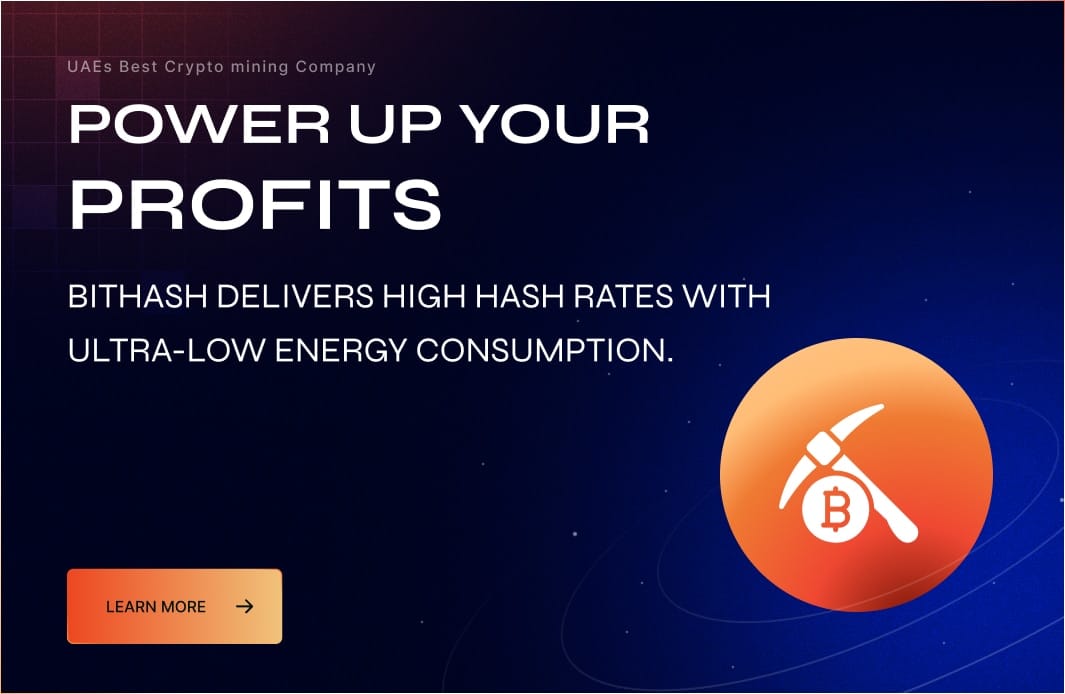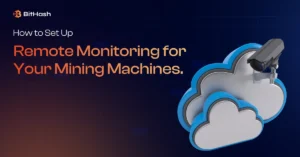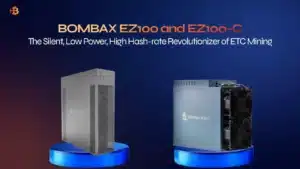Cryptocurrency mining can be a lucrative venture, but selecting the right mining hardware is crucial for maximizing profits. With so many options available, from ASICs to GPUs, it’s essential to consider factors like hash rate, power consumption, cost, and mining difficulty.
In this guide, we’ll break down the key considerations for choosing the best mining machine to ensure long-term profitability.
1. Understand the Different Types of Mining Hardware
Before investing in a mining rig, you need to decide which type of hardware suits your goals:
A. ASIC Miners (Application-Specific Integrated Circuits)
Best for: Bitcoin (SHA-256), Litecoin (Scrypt), and other ASIC-compatible cryptocurrencies.
ASIC mining machines are designed with one purpose in mind, maximum performance for a single algorithm. They are the go-to choice for serious bitcoin mining operations and large-scale mining farms.
Pros:
- Extremely high hash rate, offering superior computational power.
- More energy-efficient compared to GPU-based systems, especially for Bitcoin.
- Ideal for earning consistent block rewards on large networks like Bitcoin.
Cons:
- High upfront investment, premium ASIC mining machines can cost thousands of dollars.
- Limited functionality; one machine supports one algorithm only.
- Hardware can become obsolete rapidly as crypto mining technology evolves.
Popular ASIC Mining Machines:
- Bitmain Antminer S19 XP: Delivers 140 TH/s and is currently among the most powerful bitcoin mining devices.
- Bitmain Antminer L7: Generates 9.5 GH/s, ideal for mining Litecoin with the Scrypt algorithm.
ASICs are commonly used in professional mining farms, often paired with low electricity costs and large-scale cooling infrastructure for optimal efficiency.
B. GPU Mining Rigs
Best for: Ethereum (Ethash), Ravencoin (KawPow), and other coins requiring flexible mining algorithms.
GPU-based mining rigs are favoured by hobbyists and small-to-mid-size miners who value versatility. These crypto mining rigs are modular and relatively easy to set up.
Pros:
- Highly adaptable, can mine a variety of coins using different algorithms.
- Can be repurposed or resold for gaming, AI rendering, and other tasks.
- Easily integrated into mining pool networks for better consistency in earnings.
Cons:
- Lower hash rate per watt compared to ASICs, making them less efficient for major coins like Bitcoin.
- Higher electricity costs due to increased power draw and additional cooling needs.
Top GPUs for Crypto Mining in 2025:
- NVIDIA RTX 4090: Known for high efficiency in algorithms like Ethash and KawPow.
- AMD RX 7900 XTX: Performs exceptionally well on Ethereum Classic and similar networks.
While less powerful on their own, GPU mining rigs can still achieve competitive profits when paired with the right strategy, especially in combination with a mining pool to reduce income volatility.
C. FPGA Miners (Field-Programmable Gate Arrays)
Best for: Advanced crypto mining operators seeking a balance between power and customizability.
FPGA miners bridge the gap between GPUs and ASICs, offering excellent flexibility and efficiency but demanding a steeper learning curve.
Pros:
- More efficient than GPUs and more adaptable than ASICs.
- Can be reprogrammed for different coins, giving users flexibility similar to GPU crypto mining rigs.
Cons:
- Difficult to configure, requires technical knowledge to maximize potential.
- High purchase price and relatively niche community support.
FPGA units are rarely used in casual setups but can be effective additions to advanced mining farms and are occasionally integrated into high-performance mining pools for algorithm switching and fine-tuning efficiency.
2. Key Factors to Consider When Choosing a Miner
Cryptocurrency mining, especially bitcoin mining, requires strategic planning and technical understanding to remain profitable in a highly competitive and energy-intensive environment. Whether you’re using high-end ASIC hardware or a home-built mining rig, success depends on optimizing for hash rate, power consumption, and ROI, while navigating evolving network dynamics and operational costs. Let’s dig deeper into the factors that make or break your crypto mining venture.
A. Hash Rate (Mining Power)
Hash rate refers to the total computational power your device contributes to the network, measured in MH/s (MegaHashes), GH/s (GigaHashes), or TH/s (TeraHashes).
- A higher hash rate increases your likelihood of solving blocks and earning block rewards, which is crucial for serious Bitcoin miners.
- It’s essential to compare ASIC miners or GPU rigs based on their hash rate performance for the same algorithm.
- For instance, modern ASIC hardware like the Bitmain Antminer S19 XP offers up to 140 TH/s, a massive leap over older models.
With increasing mining difficulty, a competitive hash rate becomes more important than ever for staying profitable.
B. Power Consumption and Efficiency
Power usage is the largest operational cost in cryptocurrency mining, so understanding efficiency is essential. It is usually measured in joules per terahash (J/TH) or watts per megahash (W/MH).
- Example Comparisons:
- Antminer S19 XP: 140 TH/s at 3,010W → ~21.5 J/TH (Highly efficient).
- Antminer S9: 14 TH/s at 1,350W → ~96 J/TH (Poor by today’s standards).
Efficient ASIC miners help reduce your electricity costs, making them ideal for long-term operations, especially in large-scale mining farms where power savings scale significantly.
C. Electricity Cost ($/kWh)
Your location’s electricity costs can make or break your bitcoin mining operation.
- Use mining profitability calculators like WhatToMine or CryptoCompare to estimate net earnings.
- A simple rule of thumb: If your mining machine’s electricity bill exceeds your daily revenue, you’re operating at a loss.
- For areas with high energy rates, consider alternatives like cloud mining, though cloud mining profit margins tend to be lower due to service fees.
Reducing electricity costs through renewable energy or relocating to regions with subsidies can substantially improve your bottom line.
D. Upfront Cost & ROI (Return on Investment)
Profitability isn’t just about performance, upfront costs and ROI (Return on Investment) timelines are just as critical.
- Average hardware costs:
- ASIC miners: $1,000–$6,000 per unit.
- GPUs: $300–$2,000 each, depending on the model and algorithm efficiency.
- ROI Formula:
ROI Time=Daily Profit×365Hardware Cost\text{ROI Time} = \frac{\text{Daily Profit} \times 365}{\text{Hardware Cost}}
- Example: $10/day profit from a $3,000 miner = 300 days to break even.
Make sure your crypto mining rigs align with your ROI goals and factor in other costs like maintenance, mining software licenses, and potential hardware obsolescence.
E. Mining Difficulty & Network Trends
Mining difficulty adjusts regularly based on the overall computational power of the network. As more bitcoin miners come online with advanced ASIC hardware, the difficulty increases, thereby reducing your share of the reward.
- Monitor network hashrate growth using blockchain explorers or mining dashboards.
- Older or less efficient rigs may become unprofitable as newer machines dominate.
- Be ready to upgrade hardware or switch coins using adaptable mining software.
Staying ahead of difficulty trends is vital for maintaining a healthy profit margin.
F. Cooling & Noise Management
Mining generates intense heat and noise, especially with industrial-grade ASIC miners.
- Noise Levels:
- ASIC miners: 60–80 dB (like a vacuum cleaner).
- GPUs: Quieter, but still require ventilation.
- Solutions:
- Invest in advanced cooling setups: liquid cooling, fans, or air-conditioned enclosures.
- For residential setups, consider cloud mining or hosted mining pool services if on-site mining is disruptive.
Environmental control improves hardware lifespan and ensures consistent performance.,
3. Profitability Comparison: ASIC vs. GPU Mining
When comparing the profitability of ASIC and GPU mining in the evolving world of cryptocurrency mining, several key factors come into play—chief among them being mining rewards, operational costs, and scalability. For bitcoin miners, selecting the right hardware and infrastructure can mean the difference between consistent income and running at a loss.
ASIC hardware, such as the advanced Antminer S21, is engineered for maximum energy efficiency and raw hashing power. With cutting-edge chips and features like hydro cooling, the S21 maintains optimal performance even under intense computational loads, reducing both energy consumption and wear on components.
On the other hand, GPU mining rigs offer greater flexibility across various coins but generally suffer in terms of energy efficiency when it comes to bitcoin mining. Their higher electricity consumption combined with rising global electricity prices can significantly eat into profit margins. While GPUs shine in mining altcoins and adapting to new algorithms, they rarely match ASICs in BTC output when compared watt-for-watt.
Ultimately, while GPU mining offers versatility and lower upfront cost, ASIC hardware, like the Antminer S21, continues to dominate the bitcoin mining space. With rising electricity prices and increasing network difficulty, profitability increasingly hinges on reducing energy consumption and maximizing efficiency through advanced technologies like hydro cooling and purpose-built mining software
Factor | ASIC Miner (Bitcoin) | GPU Rig (Ethereum) |
| Hash Rate | 100 TH/s+ | 500 MH/s–1 GH/s |
| Power Use | 3,000W+ | 800W–1,500W |
| Upfront Cost | $3,000–$6,000 | $2,000–$5,000 |
| Lifespan | 2–3 years | 3–5 years |
| Resale Value | Low (obsolete fast) | High (used GPUs) |
| Best For | Large-scale miners | Small-scale miners |
4. Best Mining Machines for 2025
Here are some top mining machines :
Top ASIC Miners
- Bitmain Antminer S19 XP (140 TH/s, 3,010W) – Best for Bitcoin.
- MicroBT Whatsminer M50 (126 TH/s, 3,276W) – Competitive efficiency.
- Bitmain Antminer L7 (9.5 GH/s, 3,425W) – Best for Litecoin/Dogecoin.
Top GPUs for Mining
- NVIDIA RTX 4090 – High hash rate (~120 MH/s on Ethereum).
- AMD RX 7900 XTX – Great for Ethereum Classic (~65 MH/s).
- NVIDIA RTX 4080 – Efficient power usage (~90 MH/s).
5. Final Tips for Maximum Profit
As the world of cryptocurrency mining becomes more competitive and energy-intensive, smart strategies are essential to remain profitable. Whether you’re a solo miner or part of a large mining pool, here are some final tips that can significantly impact your bottom line while optimizing your bitcoin mining operation.
1. Leverage Mining Profitability Calculators
Before purchasing a miner or switching coins, always use tools like WhatToMine and NiceHash. These platforms help you:
- Estimate daily earnings based on your miner’s hash rate, power consumption, and local electricity costs.
- Evaluate ROI timelines by factoring in energy consumption, market price, and mining reward structures.
- Compare multiple machines side by side—like the high-performance Antminer S21 versus older ASICs.
By regularly recalculating your expected profits, bitcoin miners can make timely decisions and avoid operating at a loss.
2. Join a Reputable Mining Pool
Solo bitcoin mining is increasingly unprofitable due to rising mining difficulty and network hashrate. A mining pool aggregates computational power from many users, giving everyone a better chance at consistent mining rewards.
- Mining software like CGMiner and BFGMiner make it easy to join pools and monitor performance.
- Payouts are typically smaller but more frequent, providing stable income over time.
This is a highly recommended strategy for new bitcoin miners or those with mid-range hardware.
3. Consider Renewable Energy Sources
With energy consumption being the largest ongoing cost in mining, cutting down on power consumption is vital:
- Install solar panels or connect to wind turbines to reduce reliance on grid electricity.
- Some bitcoin miners combine renewable energy with energy-efficient machines like the Antminer S21, which offers superb hash power per watt.
This not only boosts profitability but also aligns with sustainable practices.
4. Stay on Top of Market Trends
The value of mining rewards can shift dramatically depending on coin prices, network congestion, or algorithm changes.
- Monitor coin profitability daily—what earns well today might not tomorrow.
- Use flexible mining software to switch between coins and algorithms if profitability drops.
- Watch for hardware firmware updates or tuning guides, especially for devices like the Antminer S21, to squeeze out even more efficiency.
Smart, data-driven bitcoin miners adapt quickly and pivot when needed.
5. Buy Used or Refurbished Mining Equipment
Brand-new ASIC miners can be expensive, but used units—especially from recent generations, can still deliver excellent results at a lower upfront cost.
- Look for sellers offering refurbished machines with warranties.
- Units like slightly used Antminer S21s still offer high energy efficiency and are widely supported by current mining software.
For budget-conscious miners or those scaling up, this route can substantially shorten ROI time.
Conclusion
Choosing the right mining machine isn’t just a tech decision, it’s a strategic investment move. Whether you’re eyeing high-performance ASICs for serious bitcoin mining or opting for adaptable GPU rigs to explore altcoins, your success hinges on aligning your hardware with your budget, electricity costs, and long-term mining goals.
Always calculate your return on investment before pulling the trigger, and keep your eyes on market trends and mining fast. By staying informed, energy-efficient, and financially savvy, you’ll position yourself to thrive in the ever-shifting world of cryptocurrency mining.
Start mining smarter, not harder, and let your hash power work for you.





